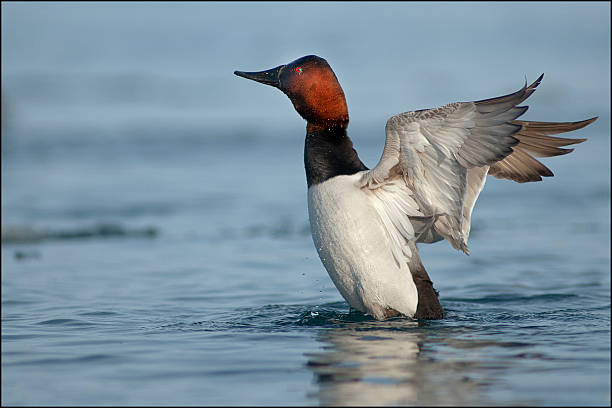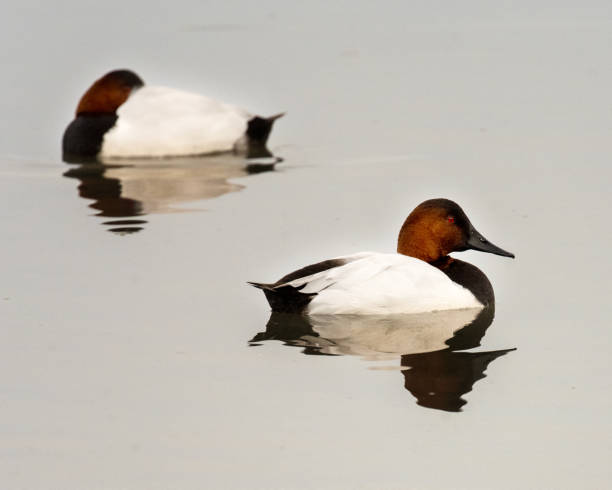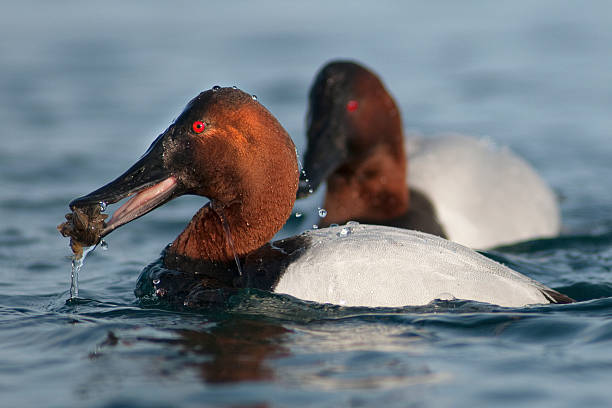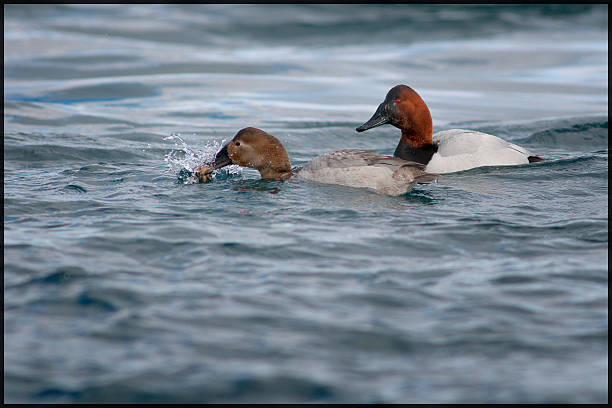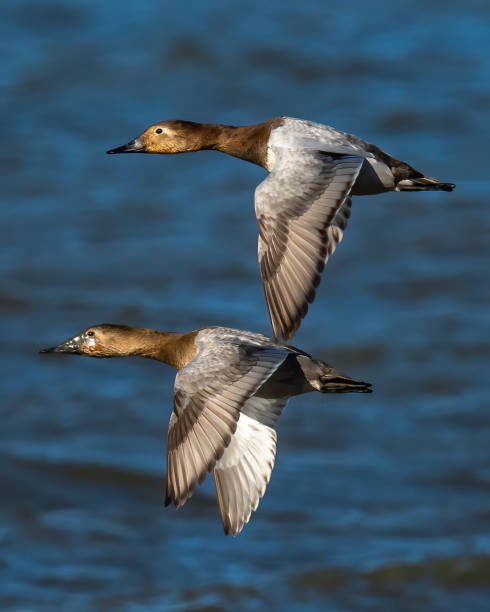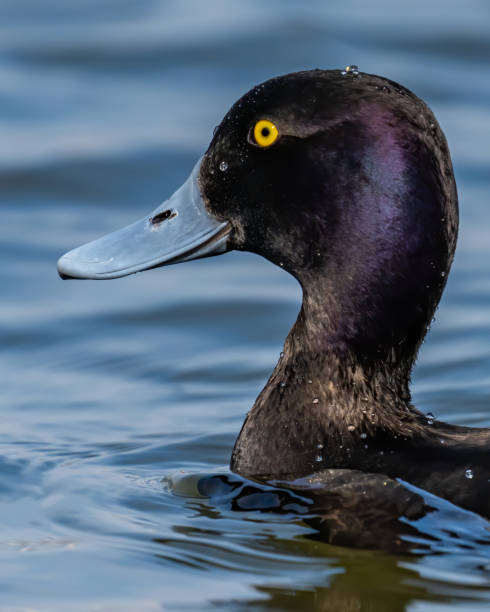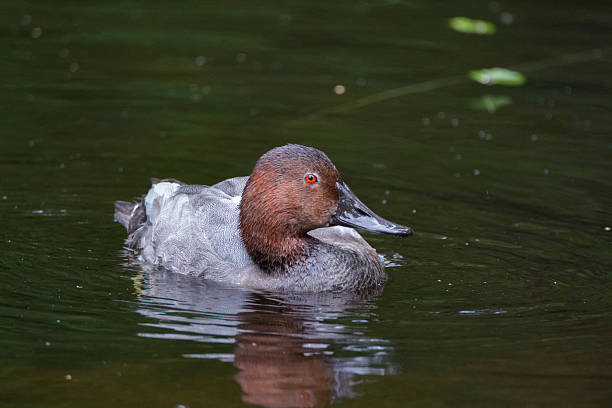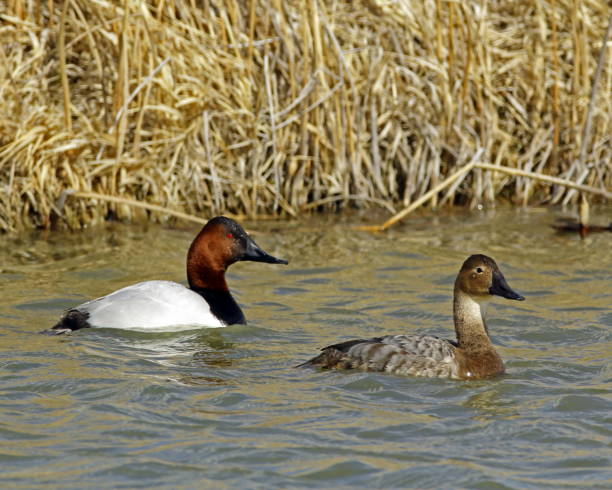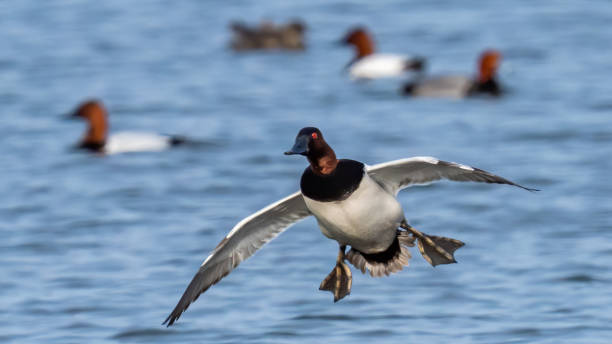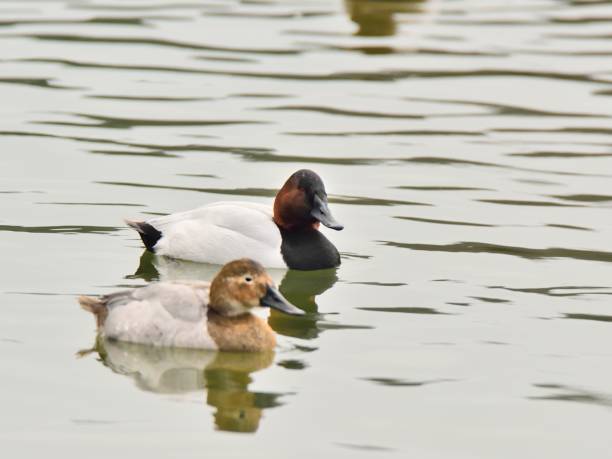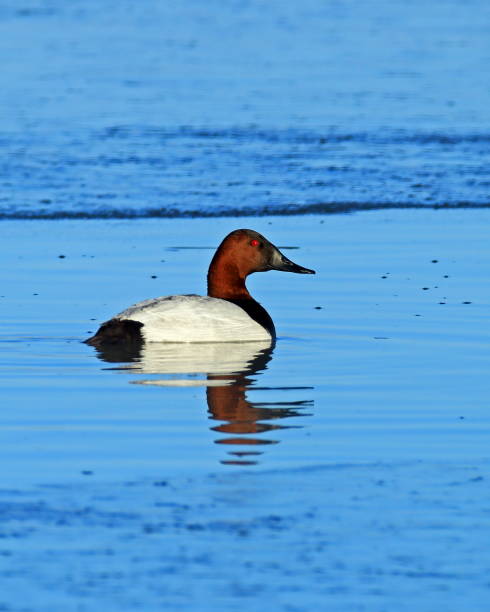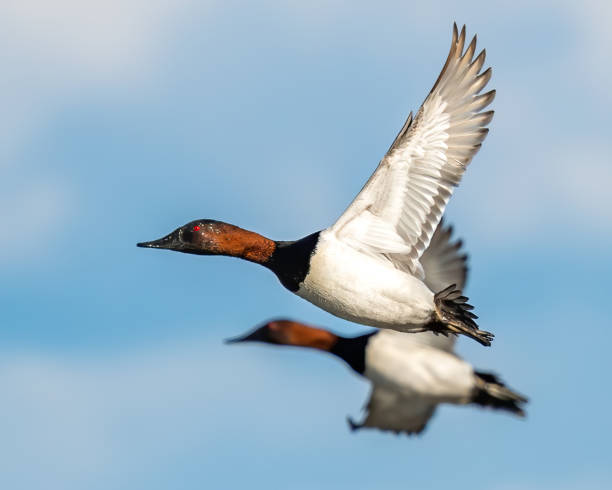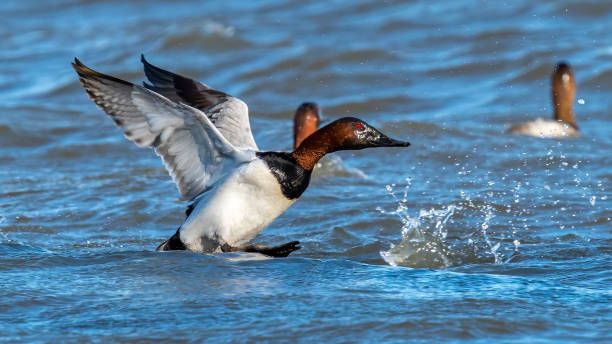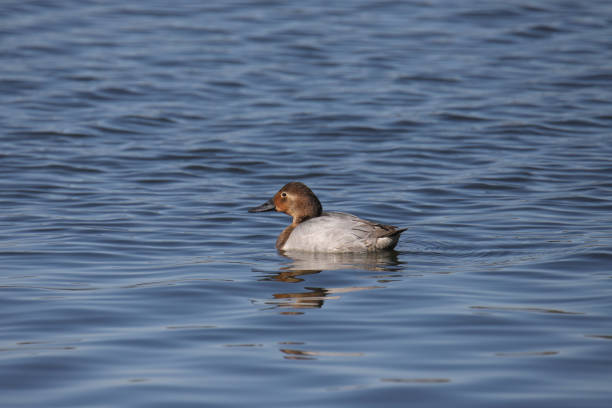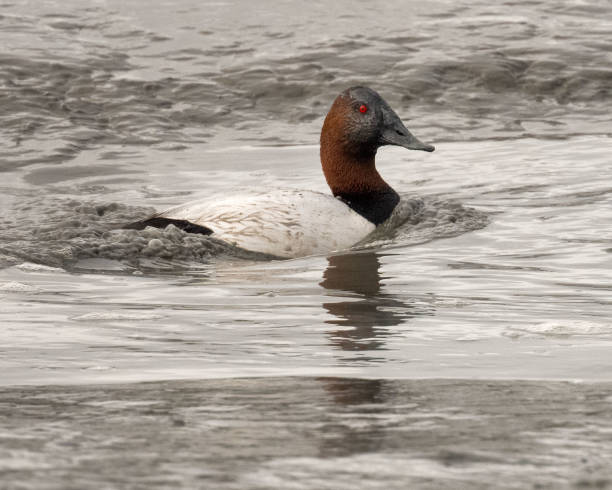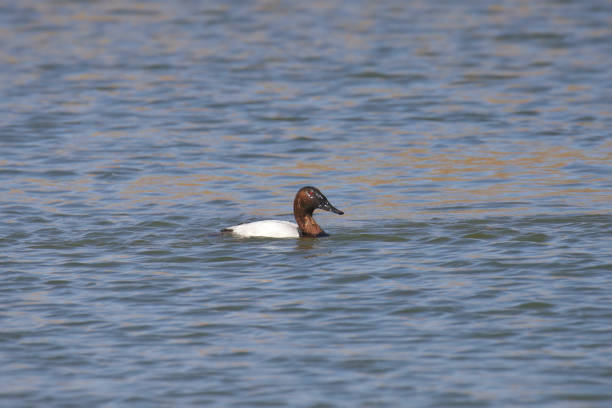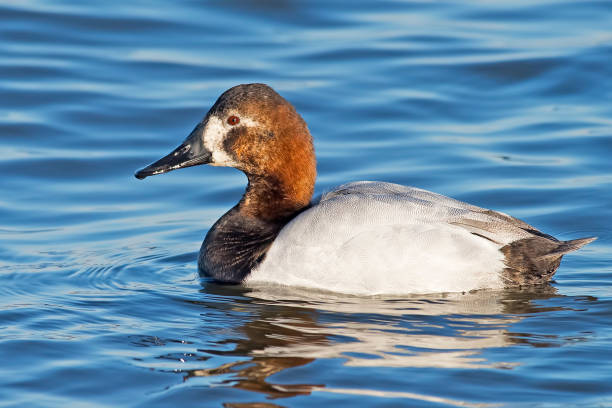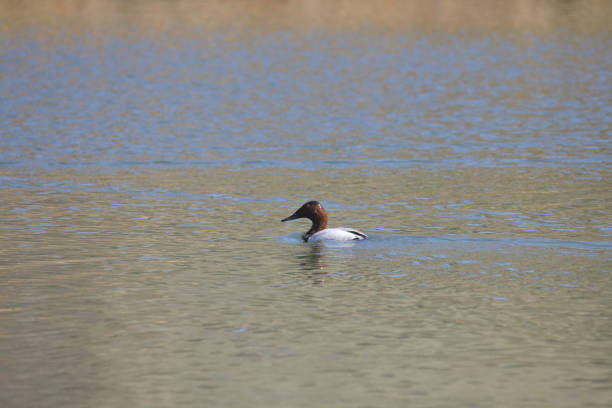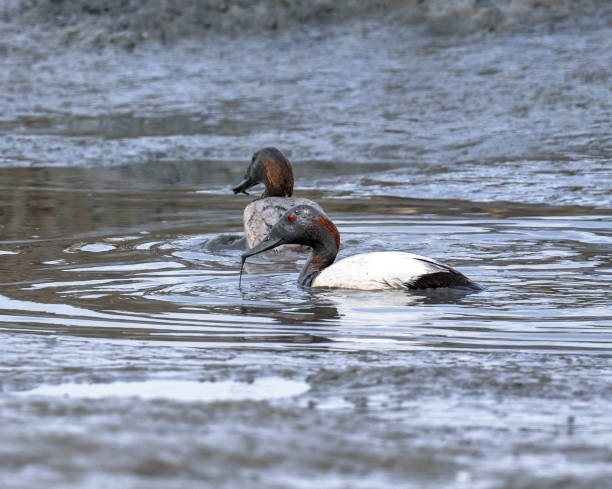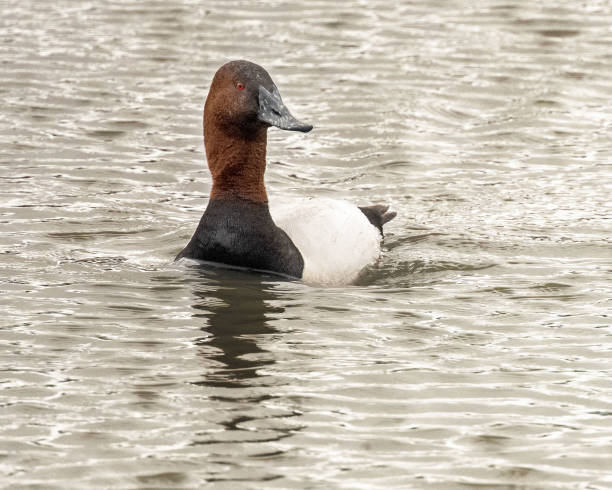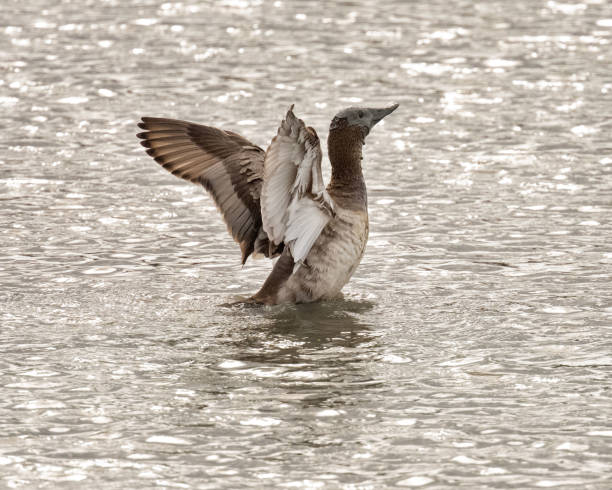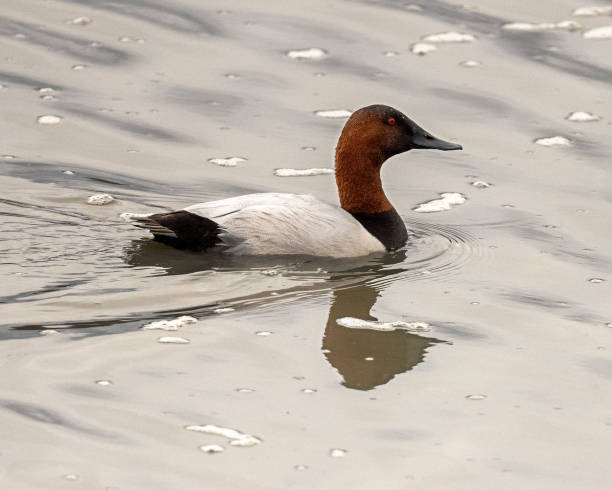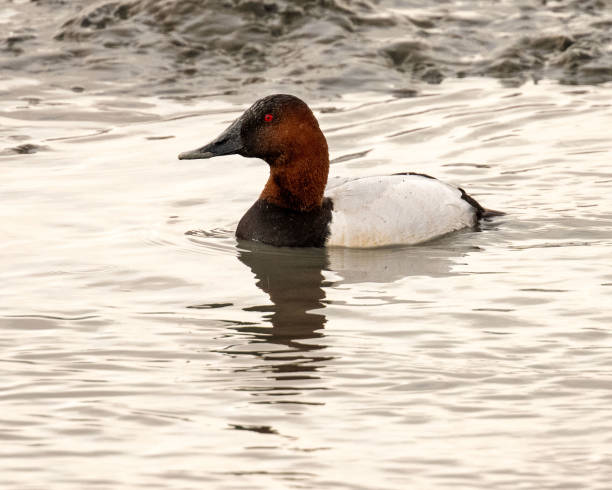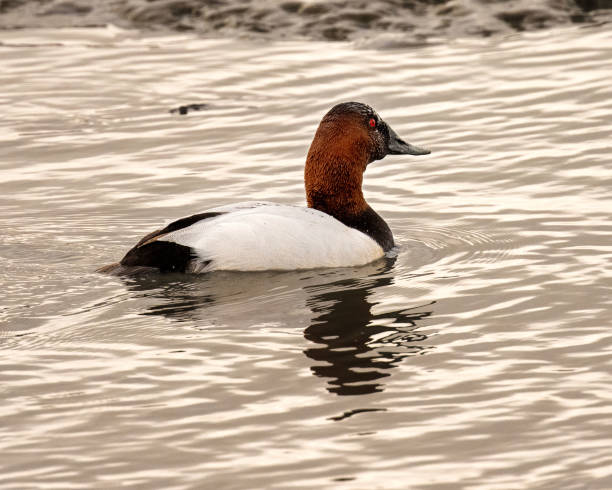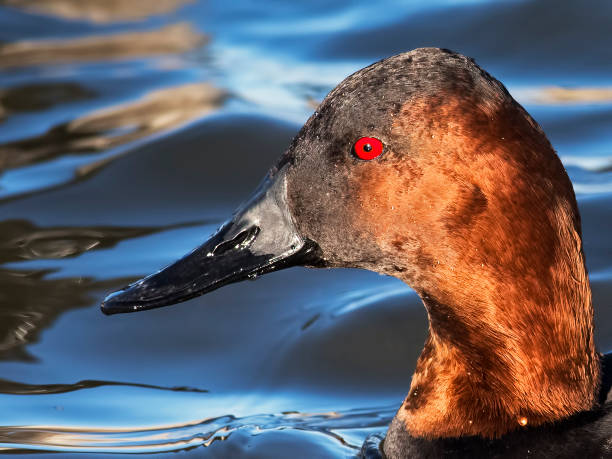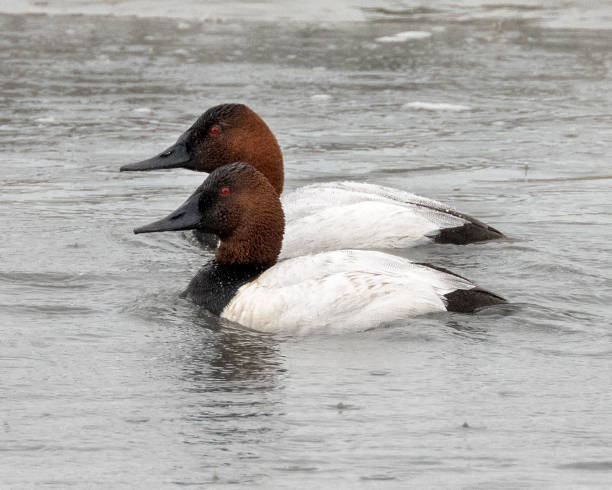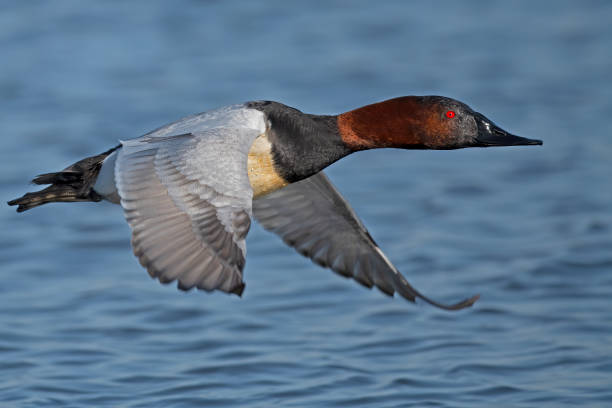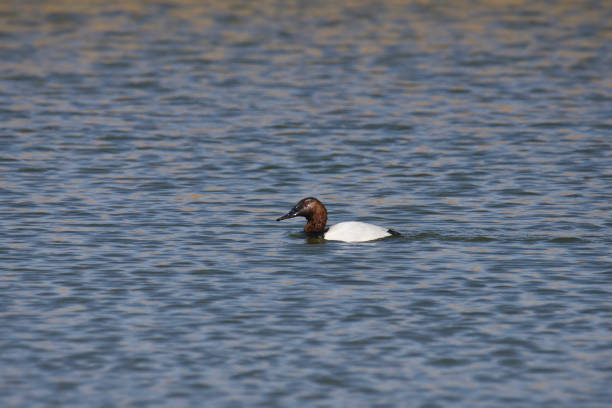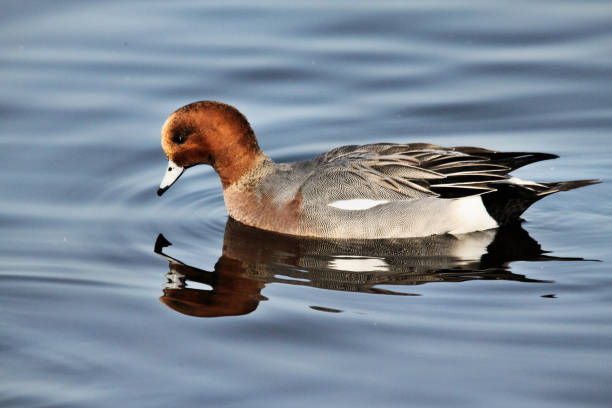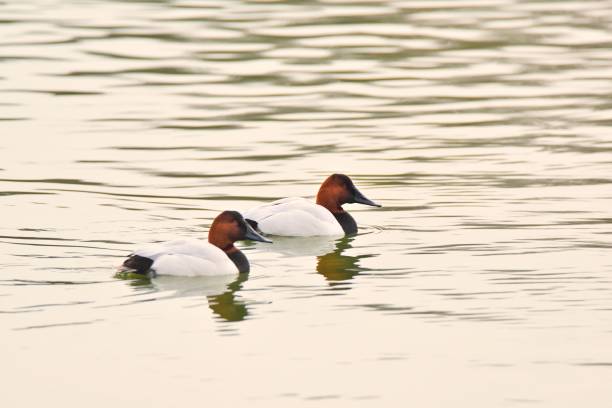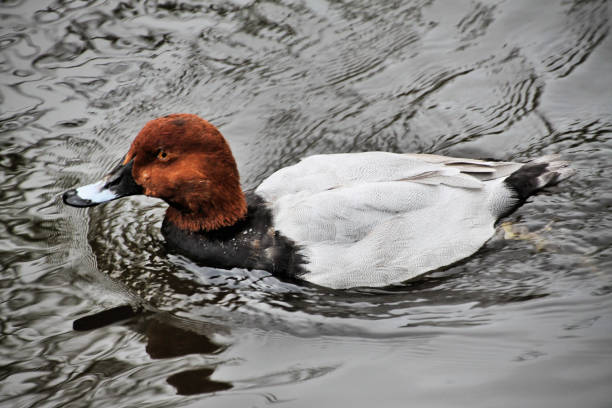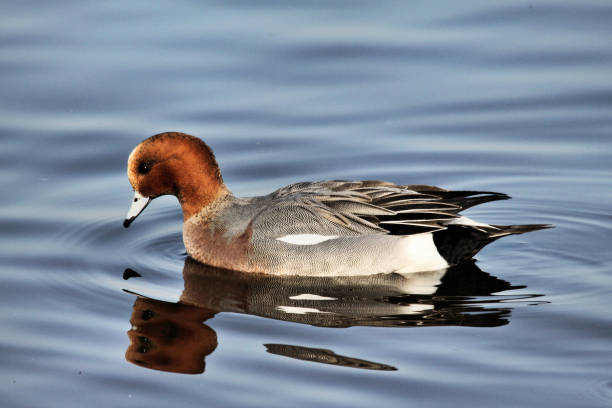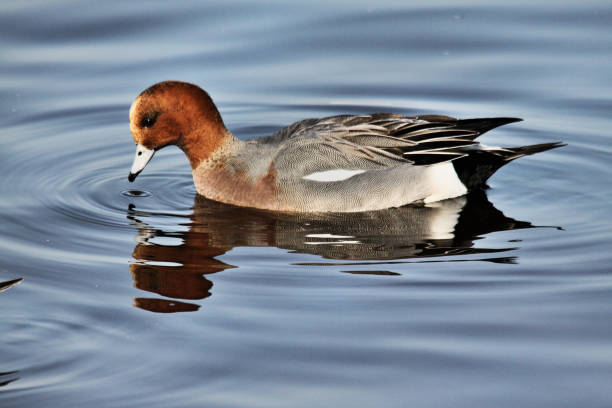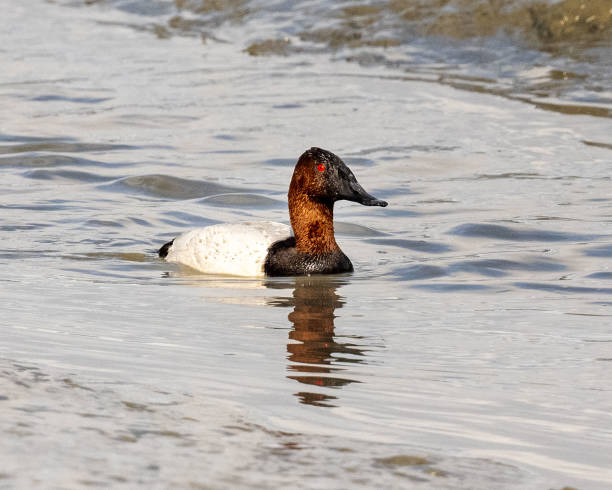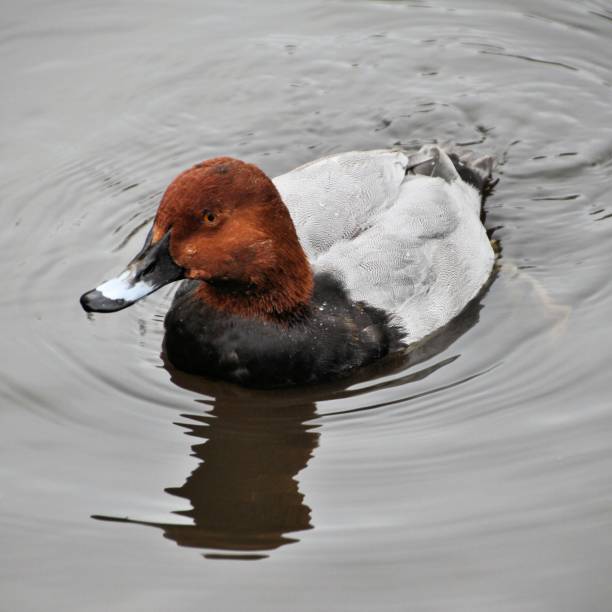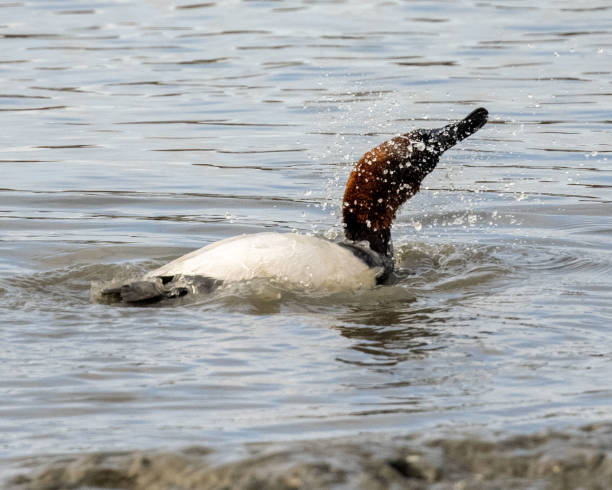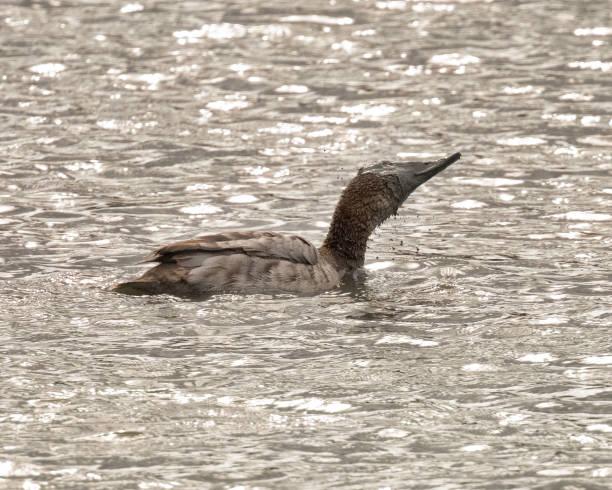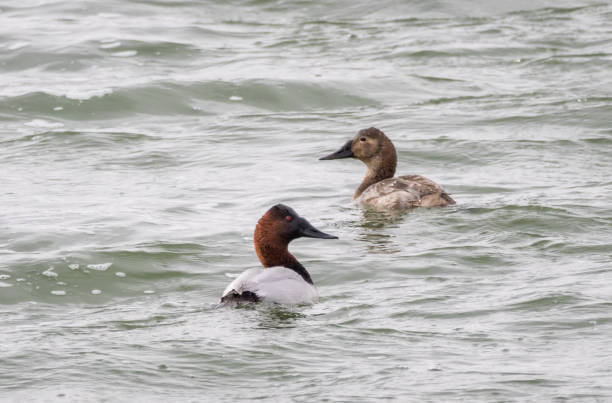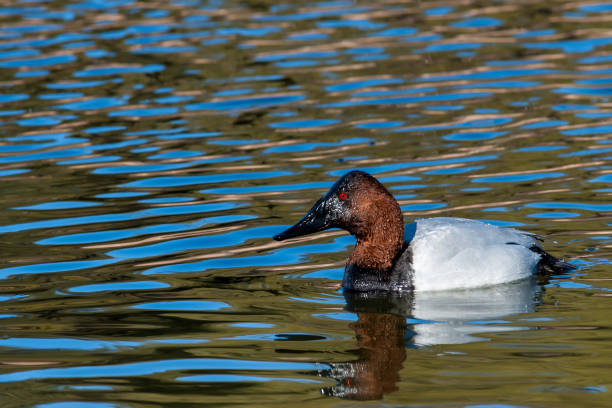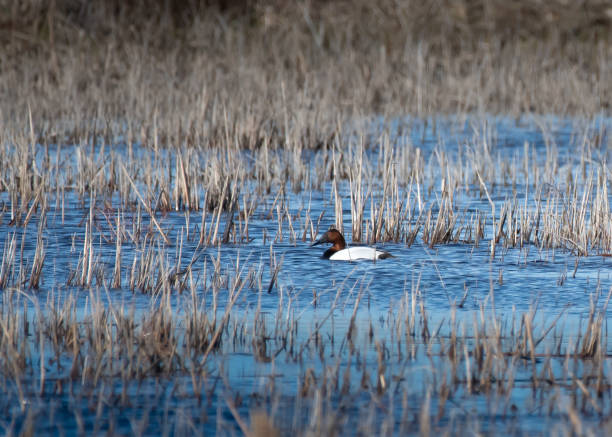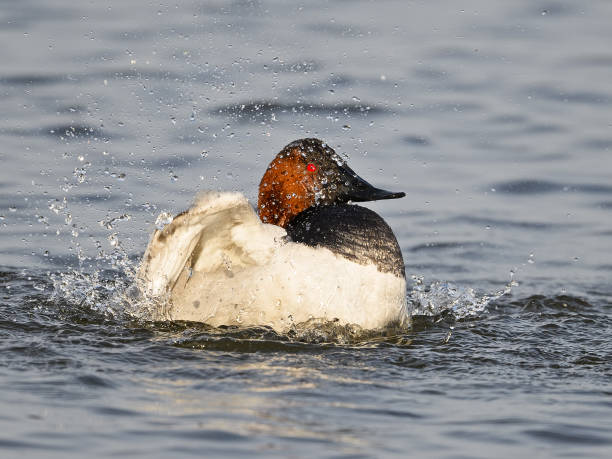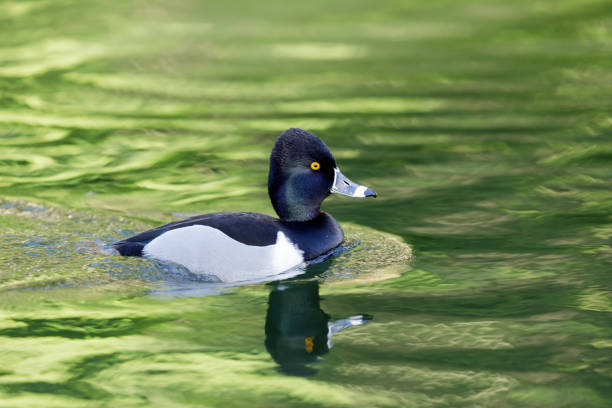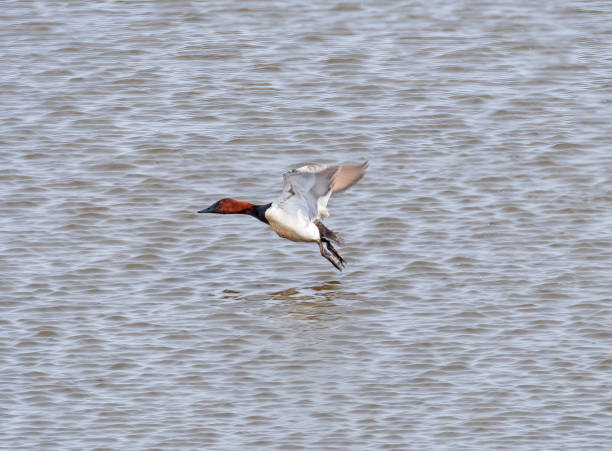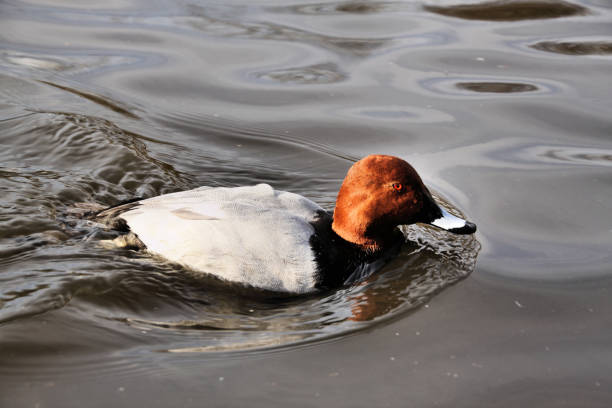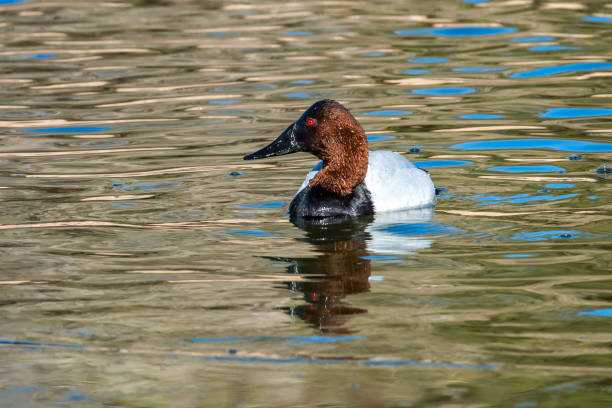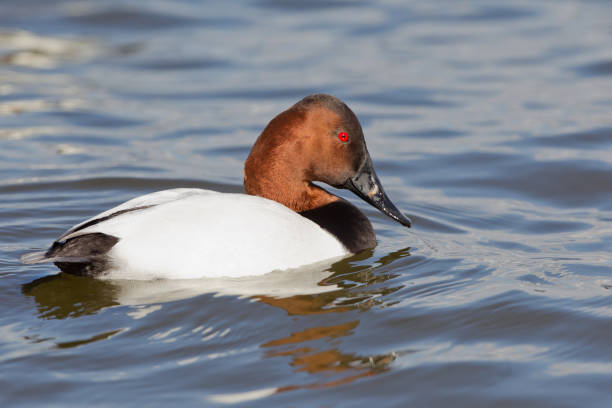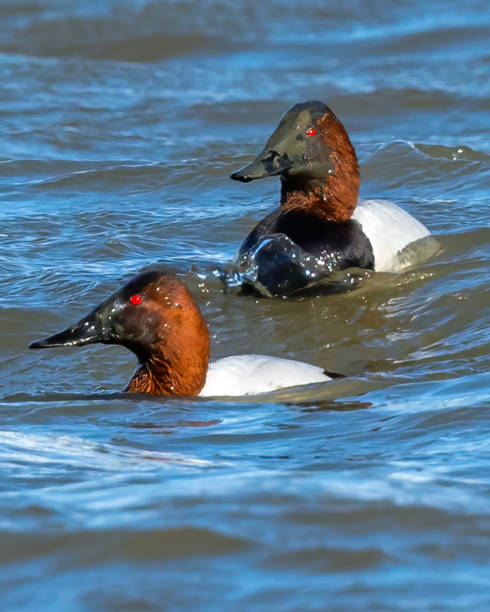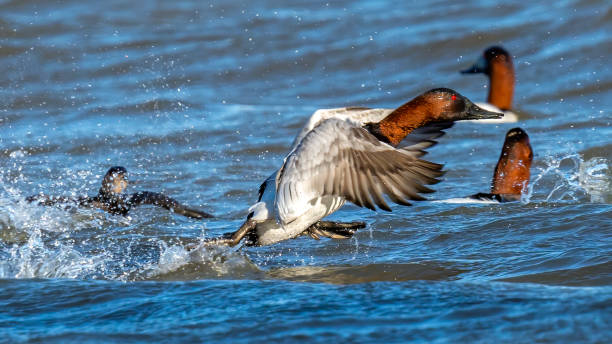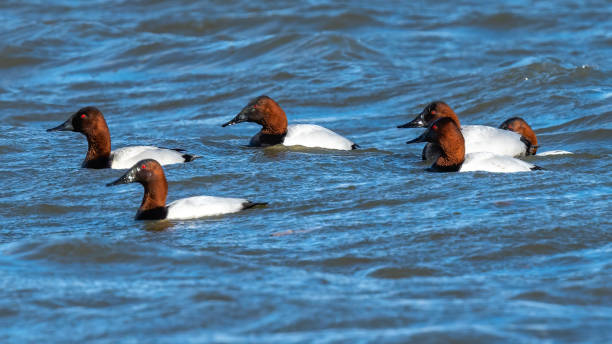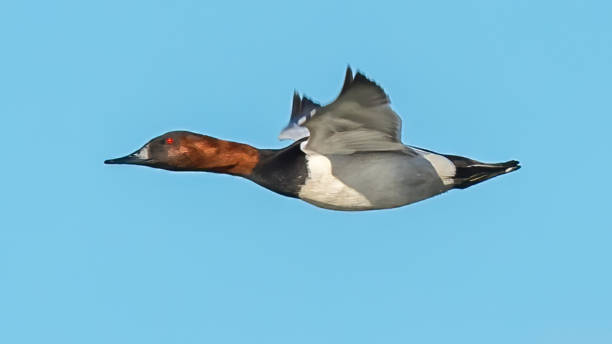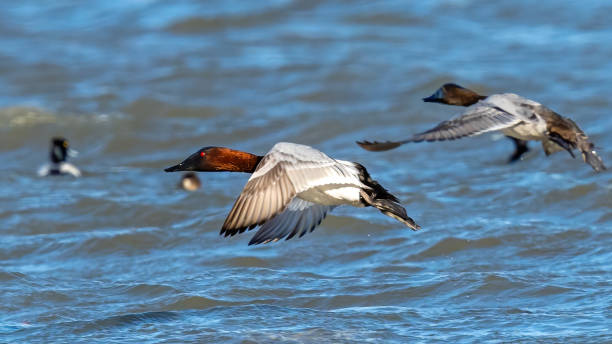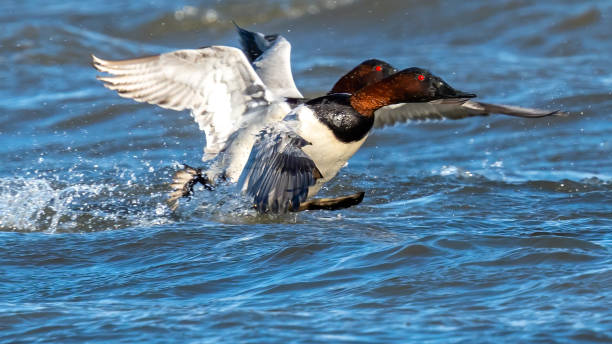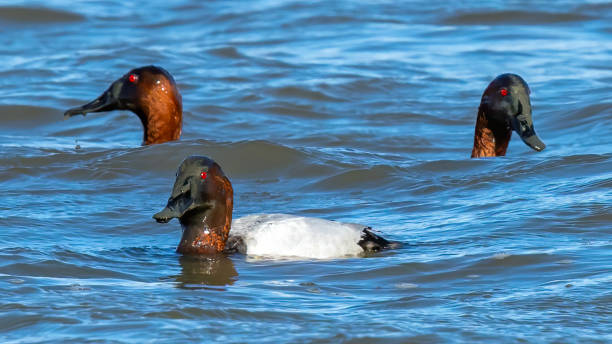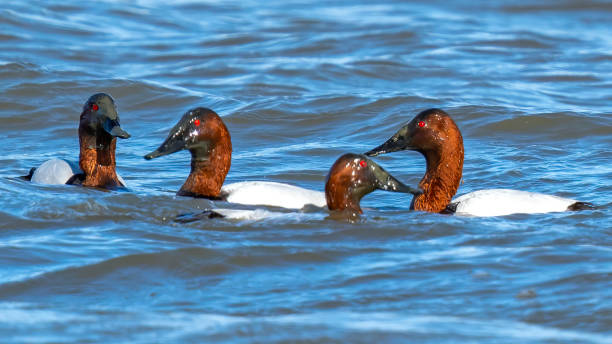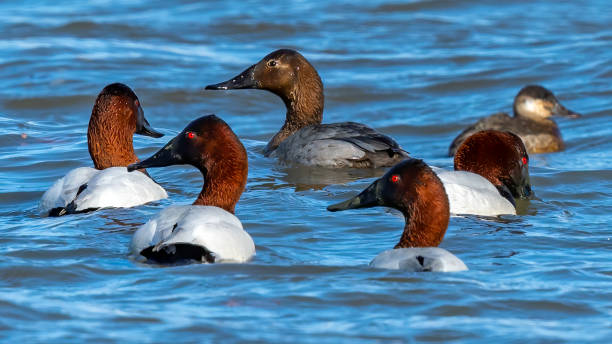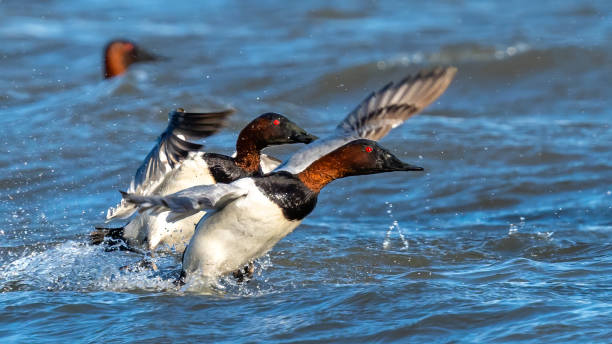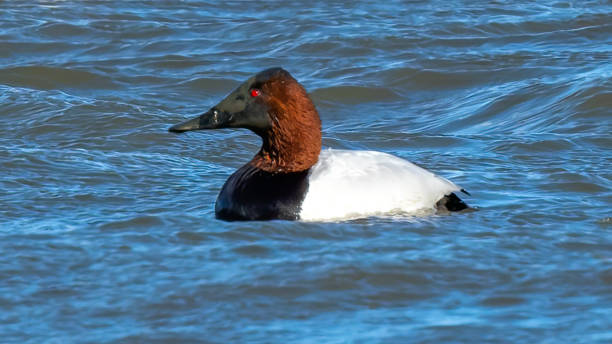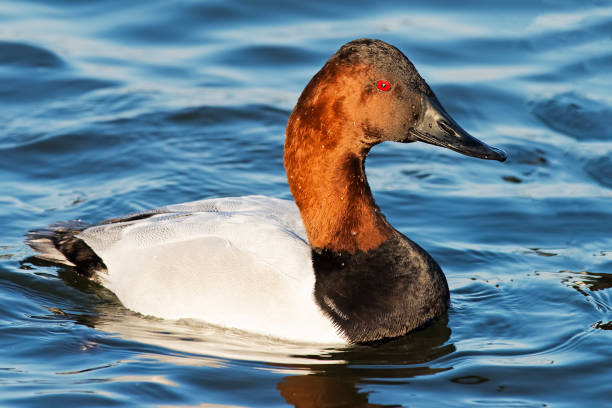
Male North American Canvasback Duck Aythya Valisineria Pictures, Images and Stock Photos
Browse 180+ male north american canvasback duck aythya valisineria stock photos and images available, or start a new search to explore more stock photos and images.

A canvasback drake flapping it's wings to dry off after preening.
A canvasback duck swimming in the slough at Baylands Nature Preserve in Palo Alto, California.
A canvasback munching on mussels, water dripping off it's head.
Pair of canvasbacks, the hen is rinsing some mussels she just brought up from the bottom of the river. The drake is looking on, as if he might steal them.
A breeding pair of Canvasback, Aythya valisineria, floating along without a care in the world, except he is really keeping an eye on her, just like young guys
A canvasback duck swimming in a slough at Baylands Nature Perserve in Palo Alto, California.
A canvasback duck swimming in the slough at Baylands Nature Preserve in Palo Alto, California.
A canvasback duck swimming in a slough at Baylands Nature Perserve in Palo Alto, California.
A canvasback duck stretching his wings in a slough at Baylands Nature Perserve in Palo Alto, California.
A canvasback duck swimming in a slough at Baylands Nature Perserve in Palo Alto, California.
A canvasback duck swimming in the slough at Baylands Nature Preserve in Palo Alto, California.
A canvasback duck swimming in the slough at Baylands Nature Preserve in Palo Alto, California.
Canvasback ducks swimming in a slough at Baylands Nature Preserve in Palo Alto, California.
Canvasback ducks swimming in a slough at Baylands Nature Preserve in Palo Alto, California.
That's all, just two Canvasback, Aythya valisineria, drakes enjoying each others company as the motor along
A canvasback duck swimming in the slough at Baylands Nature Preserve in Palo Alto, California.
A canvasback duck swimming in the slough at Baylands Nature Preserve in Palo Alto, California.
A canvasback duck swimming in a slough at Baylands Nature Perserve in Palo Alto, California.
Male and female Canvasback ducks swim in a lake near Roberts, Idaho.
The Canvasback (Aythya valisineria) is a large diving duck, the largest in North America. The duck’s common name is based on its white back looking like a blank painter’s canvas. The canvasback has a wedge-shaped head and long neck. The adult male has a black bill and a reddish head and neck. The male’s sides, back, and belly are white resembling the textured weave of a canvas. The adult female (hen) also has a black bill with a light brown head and neck. The chest, sides and back are brown. The canvasback’s primary breeding habitat is in the North American prairie potholes. It prefers to nest among the protective cover of cattails and bulrushes. Other important breeding areas are the river deltas of Saskatchewan and the Alaskan interior. The canvasback migrates to wintering grounds in the mid-Atlantic states, lower Mississippi Valley or along the California coast. Brackish bays and marshes with abundant aquatic vegetation and invertebrates are ideal wintering habitat. The canvasback feeds mainly by diving but also gets food by dabbling. A favorite food of the canvasback are the tubers of the sago pondweed but also eats buds, seeds, roots, snails and insect larvae. This male canvasback was photographed while swimming at Walnut Canyon Lakes in Flagstaff, Arizona, USA.
Photograph of a male Canvasback (Aythya valisineria) duck swimming in Manitoba wetlands.
Stow Lake, Golden Gate Park, San Francisco.
A Canvasback Taking Off From the Mississippi River
The Canvasback (Aythya valisineria) is a large diving duck, the largest in North America. The duck’s common name is based on its white back looking like a blank painter’s canvas. The canvasback has a wedge-shaped head and long neck. The adult male has a black bill and a reddish head and neck. The male’s sides, back, and belly are white resembling the textured weave of a canvas. The adult female (hen) also has a black bill with a light brown head and neck. The chest, sides and back are brown. The canvasback’s primary breeding habitat is in the North American prairie potholes. It prefers to nest among the protective cover of cattails and bulrushes. Other important breeding areas are the river deltas of Saskatchewan and the Alaskan interior. The canvasback migrates to wintering grounds in the mid-Atlantic states, lower Mississippi Valley or along the California coast. Brackish bays and marshes with abundant aquatic vegetation and invertebrates are ideal wintering habitat. The canvasback feeds mainly by diving but also gets food by dabbling. A favorite food of the canvasback are the tubers of the sago pondweed but also eats buds, seeds, roots, snails and insect larvae. This male canvasback was photographed while swimming at Walnut Canyon Lakes in Flagstaff, Arizona, USA.
Male canvasback swimming in river
